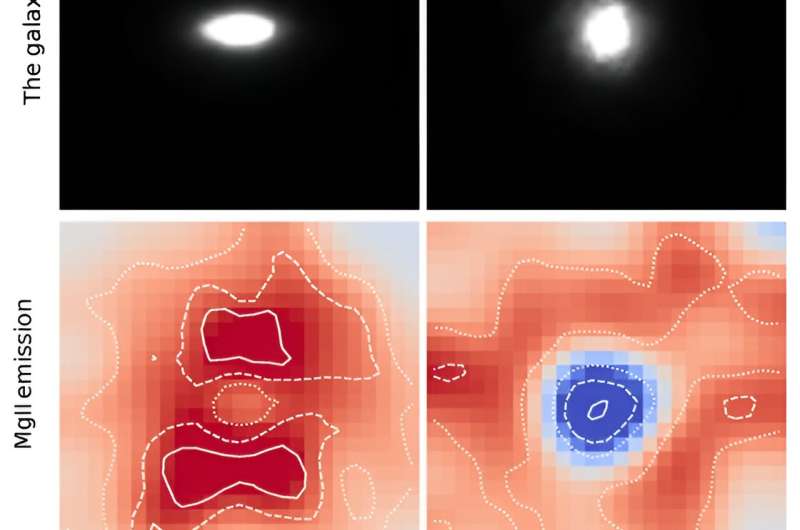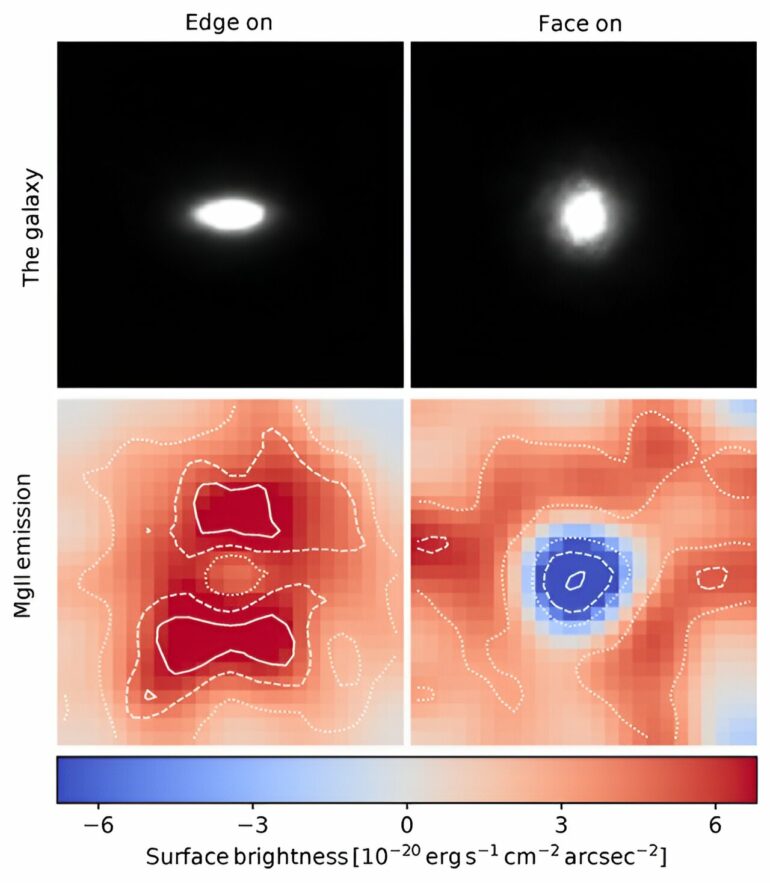Astronomers have observed, for the first time in three dimensions, that gas from spiral galaxies is blown upward and downward at high velocity, far out of the galaxy. The observations confirm the prevailing theory of galaxy evolution that says that star-forming galaxies drive intergalactic winds by venting their gas along the poles. The astronomers have published their findings in Nature.
Gas flows are important in models that describe the formation of galaxies. Galaxies grow by the inflow of gas from their surroundings. Such growth, it is thought, is inhibited by young stars and supermassive black holes that blow gas far out into space through shock waves. Exactly what happens is unknown, but without strong gas flows, galaxies would become much too massive.
Researchers have now made the first convincing case that galactic winds reach far beyond galaxies. They used the MUSE instrument on the Very Large Telescope in Chile. They studied the signal from magnesium gas around nearly two hundred, distant, spiral galaxies. In half of these galaxies, they were observing the disk edge-on. In the other half, they saw the disk face-on, as a circle.
In the group of edge-on galaxies, the gas outflow was perpendicularly upward and downward. “We detect the gas up to tens of thousands of light years from the galaxy, moving through intergalactic space at hundreds of kilometers per second,” says first author Yucheng Guo (Université de Lyon, France).

The scientists were able to identify the morphology of galactic winds. In this figure, magnesium atom emissions have been used to trace galactic winds. The flow of matter occurs along the central axis perpendicular to the galactic disc. © Yucheng Guo
“To me, it is a real milestone that we are finally witnessing intergalactic gas outflows from ordinary galaxies,” says Joop Schaye (Leiden University, the Netherlands). He co-authored the study and has been researching galactic winds and gas flows in intergalactic space for years. “Until now, observations have been difficult to interpret, but thanks to this study we can no longer ignore bipolar winds.”
Now that astronomers have mapped average gas flows and velocities, they can test and adjust their computer simulations of galaxy evolution. This is important because it will clarify how galaxies grow.
More information:
Yucheng Guo et al, Bipolar outflows out to 10 kpc for massive galaxies at redshift z ≈ 1, Nature (2023). DOI: 10.1038/s41586-023-06718-w. www.nature.com/articles/s41586-023-06718-w
Provided by
Netherlands Research School for Astronomy
Citation:
Astronomers discover galaxies have bipolar gas outflows reaching far into intergalactic space (2023, December 6)



